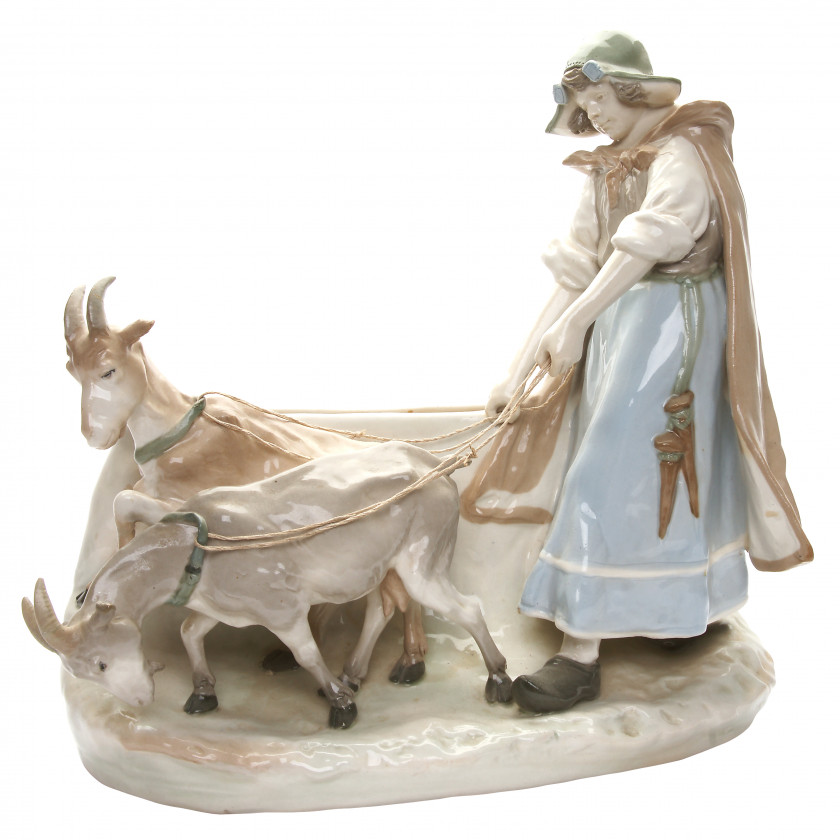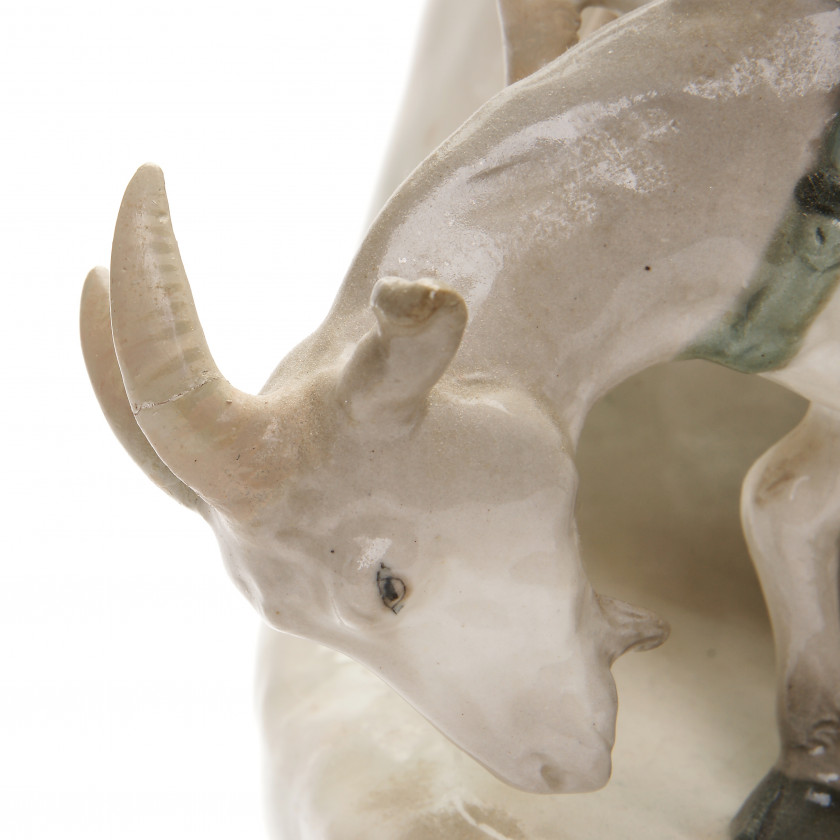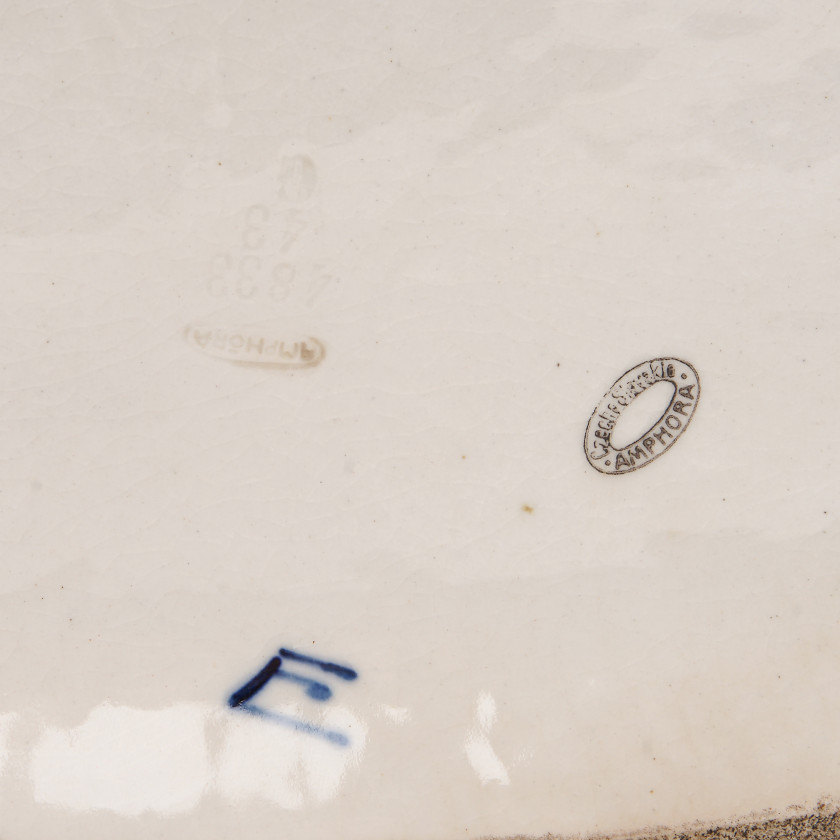Porcelain figure "Shepherdess"
-
800.00 EUR
Artist/Maker: Amphora
Artist/Maker Dates: 1892 - 1945
Place of Production: Czech Republic (Czechoslovakia)
Date of Production: 1920s
Materials: faience, underglaze hand painting
Width: 45.0 cm.
Height: 38.0 cm.
Condition:
Condition notes: Two horns restored
Description
The Amphora porcelain works existed from 1892-1945 in the Teplitz-Turn area of Bohemia, a part of Austro-Hungary. In their half a century of production, Amphora became known as a fine art pottery manufacturer of exceptional quality. They produced a plethora of innovative designs and shapes with a high level of detail, and were considered by many to exemplify the Art Nouveau style. The designs were generally influenced by Art Nouveau and Jugensdtil, as well as Grueby and Rockwood. Their creations were graced with hand-painted mythical creatures, ethereal maidens, beautiful nature scenes with birds, bats, plum trees, insects, clover, roses and forests all entwined with sweeping lines and flowing details. This was the contemporary design of the day, leaving the more staid Victorian era in its wake. A never ending array of forms, glazes and decorations typified the Amphora ceramic designs. Cinema was still in its infancy and print publications didn’t have the glossy quality we see now, so the visual impact of high quality, colour enriched ceramics with stunning imagery and designs would have been considerable.
A re-appreciation of individual craftsmanship, under threat from industrial manufacturing, also emerged at this time, and the intricate detail of the designs supported this ideal. In 1896, Amphora were made court supplier to the Imperial court in Vienna, and these pieces were identified with the name ‘Imperial Amphora’, and the Austro-Hungarian eagle trademark. Also the additional mark PD indicates it was designed by Paul Dachsel, one of their earliest and finest designers, who helped define the distinctive Amphora style. Another early Amphora art pottery designer who enjoyed success beyond the confines of Europe was Ernst Wahliss of Turn-Wein, Austria. He produced some of the most beautiful female Art Nouveau busts between 1897 and 1906, which are highly sought by collectors today given their beauty and technical complexity. Wahliss was somewhat unique among the Amphora manufacturers for having established his own retail shops in London and Vienna. Another well known, high quality Amphora manufacturer was the firm of Julius Dressler whose manufacturing operation was founded in Belia, Bohemia in 1883 and operated until 1944. Amphora was sold in the United States by finer decorating shops including Louis Comfort Tiffany of New York, who appreciated the innovative, hand crafted designs, vibrant colors, and unique glazes used by the Amphora manufacturers from Turn-Teplitz, Bohemia. Amphora works from this period were extraordinarily complex in manufacturing technique, often requiring as many as 10 firings, a series of decorators, and finishers to add the final style flourishes like gilding.
The Amphora era was truly a remarkable phase for Art Nouveau. Their imaginative aesthetic reflected both Celtic and Bohemian folklore, merged with the classical influences of Greek and Roman legends and the Arthurian tales. One can’t help but be filled with a reverence for the beauty they expressed.
Shipping details
- Log in to see the cost for shipping this lot to your address.
Shipping methods are determined by item size, type, fragility and specific characteristics.
Shipping costs are calculated based on carrier rates, delivery distance and packing complexity.
Payment details
Doma Antikvariāts accepts the following payment methods:










